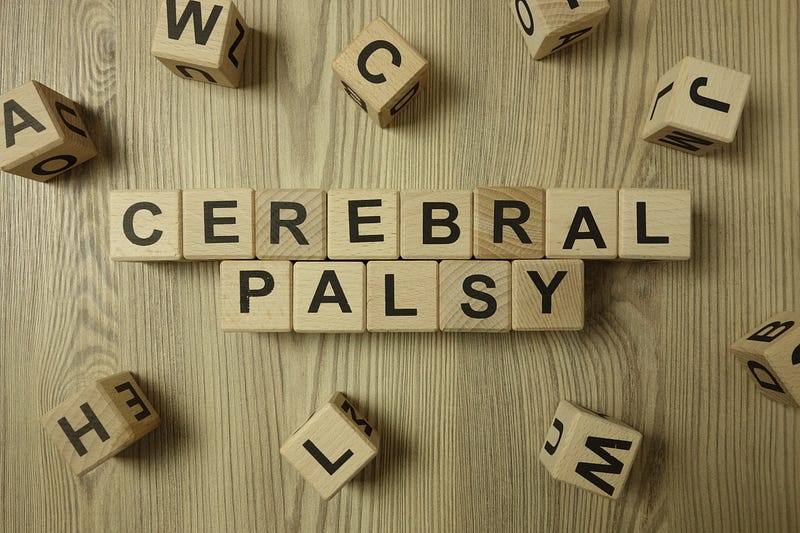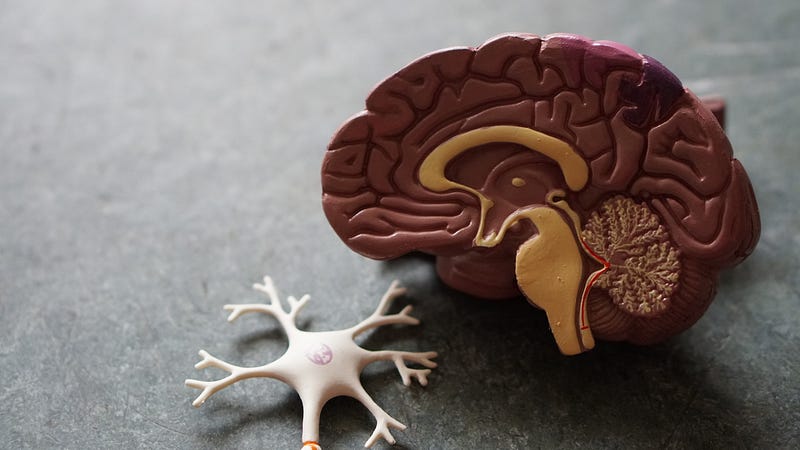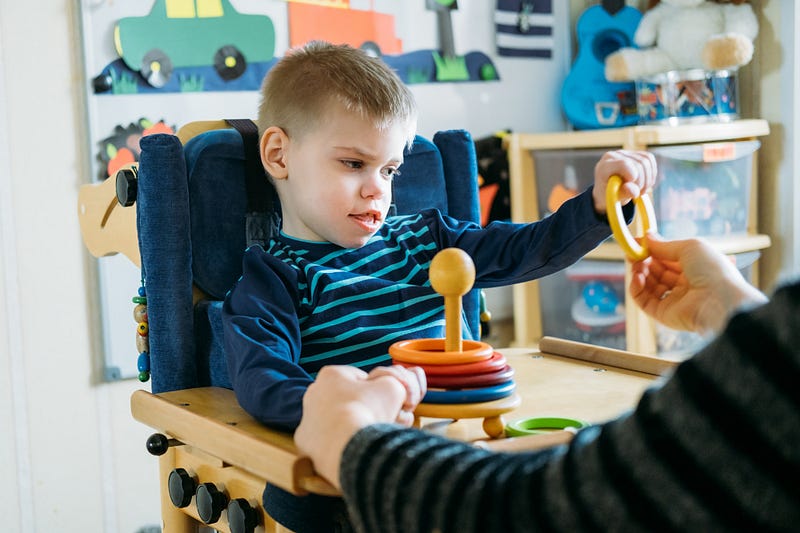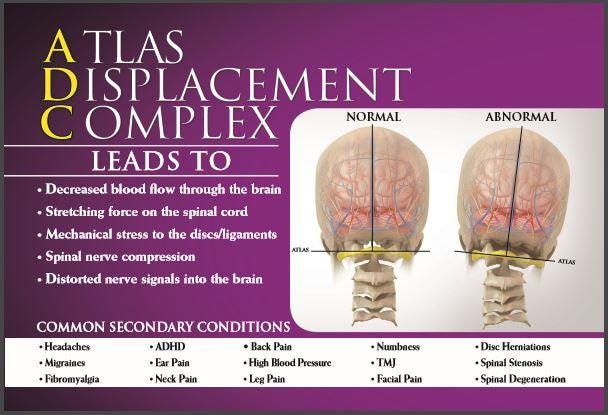 |
| Photo Credit: By piter2121 |
Cerebral palsy (CP) is more than one condition. The term cerebral palsy describes a group of conditions sharing similar symptoms. It is a neurological condition that usually shows up during infancy, leading to body movement and muscle coordination issues. The symptoms of cerebral palsy may be due to brain damages or abnormalities to the brain that affects the child’s ability to maintain the correct posture, balance, or movement.
Does cerebral palsy have specific symptoms? If yes, what are they? Can the nervous system function be improved? Is there a way to restore the body’s ability to control the muscles? We’ll learn about this and more in this article.
What is cerebral palsy?
Cerebral palsy (CP) is a group of conditions that affect the muscles' coordination and movement. In most cases, hearing, sensation, and vision are affected.
When you hear the word cerebral, what comes to your mind? Well, cerebral refers to the brain. “Palsy,” on the other hand, means “problems” with the movement of the body or “weakness.”
Most childhood motor disabilities are caused by cerebral palsy. The Centers for Disease Control and Prevention (CDC) report shows that globally, 1.5–4 of every 1000 children are affected by this condition.
Symptoms of cerebral palsy
The symptoms of this condition vary. It may be mild in some people and very severe in others. Some cerebral palsy patients may have difficulty sitting and walking. Other cerebral palsy patients may find it hard to grasp objects.
The severity of the symptoms reduces over time. Symptom severity also depends on which part of the brain was affected.

Common signs of CP include:
· Stiff muscles (spasticity)
· Involuntary movements of tremors
· Variations in muscle tone
· Late attainment of motor skill milestones, like sitting up alone, crawling or rolling over.
· Difficulty walking
· Difficulty swallowing or excessive drooling
· Neurological conditions, like intellectual disabilities, blindness, and seizures
· Lack of muscle coordination (ataxia)
It is important to note that many children are born with cerebral palsy. However, the symptoms only show up after some months or years. The symptoms usually show up before the child attains the age of 3–4.
You should consult your doctor if you think that your child has cerebral palsy. Effective treatment depends a lot on early diagnosis.
What causes cerebral palsy?
Well, cerebral palsy is mostly caused by injury to the brain or abnormal development of the brain. Damage to the developing brain can affect the brain region that controls posture, coordination, and body movement.
Damage to the brain usually occurs before the child is born. However, it may also happen during the first year of life. Most of the time, the exact cause isn’t known.
 |
| Photo Credit: irissca |
Factors that may cause cerebral palsy include:
· Jaundice in the child
· Genetic mutations that cause poor development of the brain
· Maternal infections, like herpes simplex or German measles
· Asphyxia neonatorum (lack of oxygen during delivery)
· Head injuries due to falls, automobile accidents, or child abuse
· Bleeding into the brain (intracranial hemorrhage)
· Brain infections, like meningitis and encephalitis.
Who is at risk for this condition?
Several factors may increase a child’s risk for cerebral palsy. Prominent among these include:
· Low birth weight
· Premature birth
· Rh incompatibility
· Breech birth (a condition where the baby’s feet or buttocks comes out first)
· When the mother is exposed to toxins like methylmercury during birth.
How does upper cervical chiropractic help with cerebral palsy?
Chiropractic is Greek for “practices by hand.” There are different types of medical doctors with specialties; there are different types of chiropractors who focus on other specific conditions besides pain management.
Most chiropractors take the traditional approach and do an EXCELLENT job at it, too. However, this type of care falls under symptom relief or symptom management, otherwise known as “band-aid” care.
In my office, Foundation Chiropractic, we have a non-traditional approach to chiropractic. We focus on Foundational Correction with an emphasis on the upper cervical spine or the top of the neck. We fix the primary condition and correct the spine back to normal without ever twisting, cracking, or popping. And adjust the neck without any popping or cracking.
 |
| Atlas Displacement Complex (ADC) |
There have been several studies published that have shown how upper cervical chiropractic care may be effective in naturally treating cerebral palsy. One of the studies involved a 5-year-old boy. He suffered seizures, blindness, and chronic ear problems. As a result, he was confined to a wheelchair. Upon consulting an upper cervical chiropractor, a Foundational Shift was discovered.
The chiropractor set to work, and after two adjustments, the vocal drone (which was characteristic of the boy’s voice) became an occasional moan. The boy was able to clap, and his seizures reduced. After four weeks of treatment, the vocal drone seized completely, and he could sit and stand on his own.
Within 5 weeks of treatment, the central vision was restored, as confirmed by an ophthalmologist, confirming a significant improvement in his cerebral palsy.
It is important to note that specific upper cervical chiropractic adjustments can reduce some symptoms of cerebral palsy. For instance:
· Correcting Foundational Shifts can help those who experience sleep disorders, hypertonic musculature, and personality disturbances.
· Corrections can also help with cranial dysfunction in the sphenobasilar junction, especially in children who suffered birth trauma.
Takeaway - Foundational Correction Can Help Cerebral Palsy Symptoms
Evidence shows that Foundational Correction using upper cervical chiropractic care can help reduce some of the cerebral palsy symptoms naturally.
If your child suffers from this condition, or you know anyone that does, advise them to schedule a complimentary consultation with an upper cervical chiropractor that focuses on Foundational Correction. The doctor will examine the patient using advanced diagnostic imaging and testing. The objective testing will help the doctor determine if they can or cannot help the patient. If there’s a shift in the upper cervical spine, the Foundational Chiropractor will use the advanced imaging to give a precise, targeted adjustment — restoring the brain-body connection and allow the nerves to function to their full potential.
If you’re interested in Foundational Correction and would like to learn more, you can call my office at 813–578–5889 or visit our online scheduler to book your complimentary consultation.
Remember, at Foundation Chiropractic, our consultations are simply a conversation without any commitment whatsoever needed. We look forward to meeting you and explaining the Foundational Difference.
References
Hawk C. (2016). The Use of Chiropractic by Special Populations. Journal of evidence-based complementary & alternative medicine, 21(2), 83–84. https://doi.org/10.1177/2156587216635345
Kachmar, O., Voloshyn, T., & Hordiyevych, M. (2016). Changes in Muscle Spasticity in Patients with Cerebral Palsy After Spinal Manipulation: Case Series. Journal of chiropractic medicine, 15(4), 299–304. https://doi.org/10.1016/j.jcm.2016.07.003